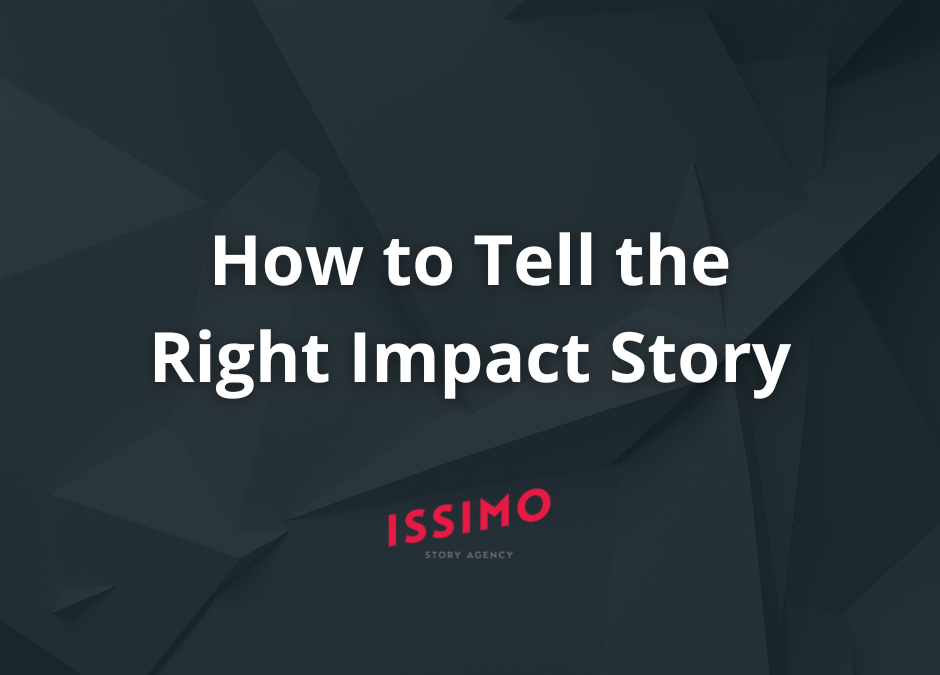Lean Into Authenticity With Your Impact Story
If you think that impact organizations with bigger budgets are more effective at fundraising, you aren’t alone. Bigger budgets = more resources = more success
It may make sense, but budget size does not correlate with success in fundraising, as we discovered from our recent attitudinal research study. Three distinct segments emerged from the data: Confident, Aspiring and Struggling respondents. We see successful fundraisers across all segments and from those whose organizations have vastly different marketing budgets — from $25,000 to $1 million annually. The big takeaway? Fundraising efficacy has more to do with how you use your resources than the number of resources you have.
Still, 82 percent of impact organizations aren’t getting the results they want. That’s because there’s a missing link between brand and audience. Bridging that gap can only be filled by telling the right impact story. Today’s post will dive deeper into this topic so you can find more fundraising success.
Solving Funding Challenges with Storytelling
To make an impact, you need to work smarter, not harder. And smart impact organizations leverage the power of the head and the heart in their storytelling to attract capital and inspire action. Our research shows that impact organizations that make a strong business case for returns and impact (head) and have a strong brand and visual story (heart) are more successful fundraisers. Successful organizations find the balance between the two because both the head and heart are necessary to tell the right impact story. It needs to ring true to you (i.e., internally to your organization) and the external audience you’re trying to engage.
To tell a compelling impact story, you first must look inward. You can’t be consistent if you are constantly a chameleon. You must find what’s authentic to your organization over the long haul. If a story does not ring true to you and your team internally, it won’t motivate you. While a certain degree of aspirational messaging is good, it can’t be too far off your organization’s DNA. Instead of pretending to be something you’re not, let your unique light shine. That will attract those who value what you have to offer.
Balancing Brand and Audience
Impact organizations say their most important audience to influence is investors and donors. However, they rate their fundraising communication as only somewhat effective in the following categories:
- Vividly or accurately describes our mission and vision
- Achieving an emotional response
- Persuasive
- Visually interesting
- Financially compelling
To increase your fundraising’s effectiveness, your audience needs to have a compelling reason to fund your organization.
Ask yourself: What is your impact organization’s message? What impact are you trying to make, and how can your audience buy into it?
“If a story is not about the hearer, he will not listen.”
– John Steinbeck
To compare it to The Lord of the Rings, your organization is not the main character, Frodo. You are the sidekick helping the audience reach their quest. Are you the wise guide (Gandalf)? The protector (Aragorn), the loyal friend (Samwise), or the comic relief (Merry and Pippin)?
Making your audience the hero of the story requires you to understand what they want and what’s in their way from getting it.
What do They Want?
Dig deep and ask “why?” until you reach a core emotional benefit. Here’s an example: A customer entering a hardware store is looking for a drill bit. Why? They don’t really care about the drill bit; they care about the hole they can drill in the wall. Why do they want a hole in the wall? They want to hang a picture in their baby’s nursery. Why? So the room can feel cozy when the baby arrives. Why? They want to feel like a good, prepared parent. That is the core emotional benefit.
Depending on where you fall along the capital spectrum (from traditional investments to impact investing to catalytic capital to pure philanthropy), an investor or donor’s expectations will vary. Of course, they want a return of some kind. They are investors first and engaging with the impact you’re trying to make second. Think about the core emotional benefit they’re after.
Let’s look at a more industry-specific example. You are courting institutional investors in the DACH and Benelux region who are moving into impact investing. What do they want? A return (of course) and diversification in emerging markets. Why? They are feeling pressure from shareholders and pensioners and want to be seen checking the impact box. Why? They are extremely risk averse and change of any kind is risky, so they want a safe and proven way to tack on a green label and protect their job.
What’s Getting in the Way?
Without obstacles, your audience would already have what they want. Building off the example above, institutional investors don’t know who to trust or don’t know how to engage in impact investing while maintaining their fiduciary responsibility. So they drag their feet as the pressure builds from management and stakeholders to do something with impact.
This is where you can show how your organization is uniquely positioned to help them overcome their obstacles to get what they want using your impact story. Instead, most organizations focus on how great they are and what they want.
For impact organizations with solid missions to create lasting change, your audience needs to follow along with your brand story and be part of it. Show your audience how their donation or investment advances the causes they care about.
The characteristic impact organizations believe most affects their fundraising success is a clear and compelling message that connects to funders — not a history of strong financial performance, a strong fundraising reputation or having ample resources. Successful impact organizations overwhelmingly believe in the power of great storytelling and connecting messages to audiences. But to do that, you have to know how to tell the right impact story.
How to Tell Your Brand’s Story
Making an impact depends on the power of your storytelling. Telling the right story requires thoughtful positioning, relevant themes, and content that connects your audience to your brand. That is what leads to successful fundraising.
At ISSIMO, we believe visual storytelling unlocks your impact potential. And impact organizations agree. While 87 percent use visual storytelling, only 18 percent say their visual storytelling is highly effective.
Once you’ve refined your storytelling to speak to the head and the heart, centered the audience and positioned your brand to be in a supporting role, you’re ready to elevate your storytelling (and you don’t need additional resources to get the job done).
In our next blog, we’ll share how differentiation can help your organization tell the right story so you can stand out while staying relevant.
To learn more about each segments’ behaviors and how you can tell the right story, check out our entire executive summary. And to explore the data yourself, check it out here.

